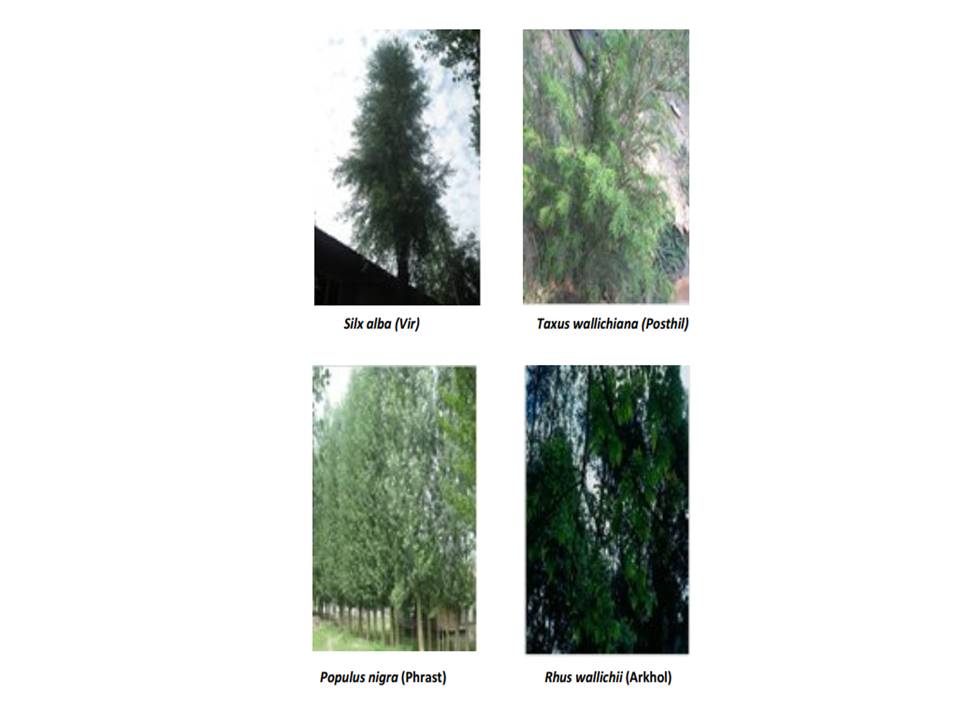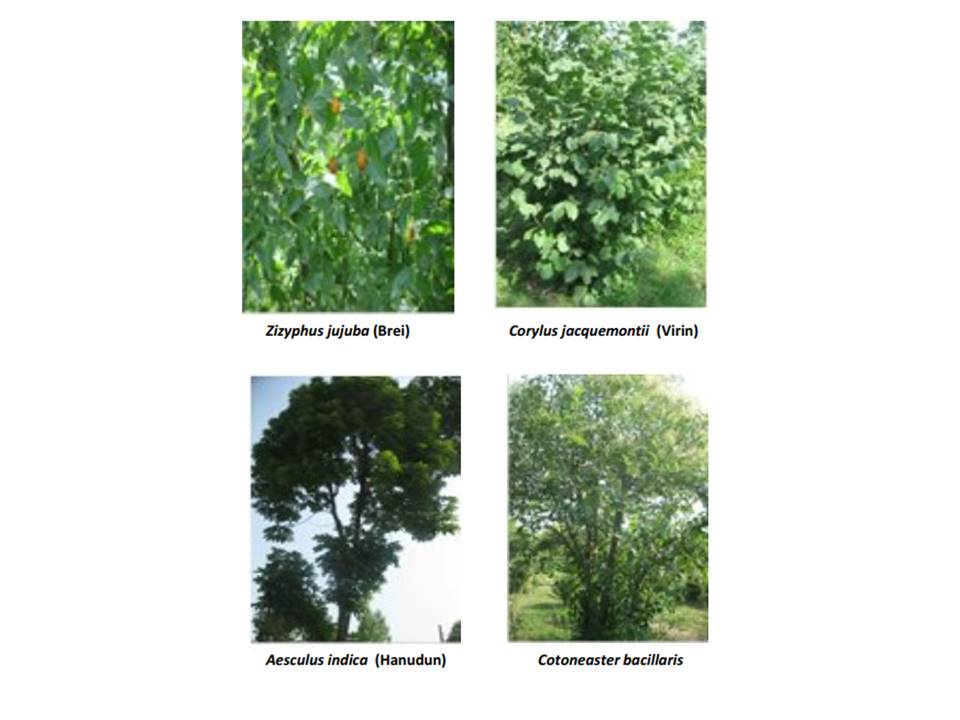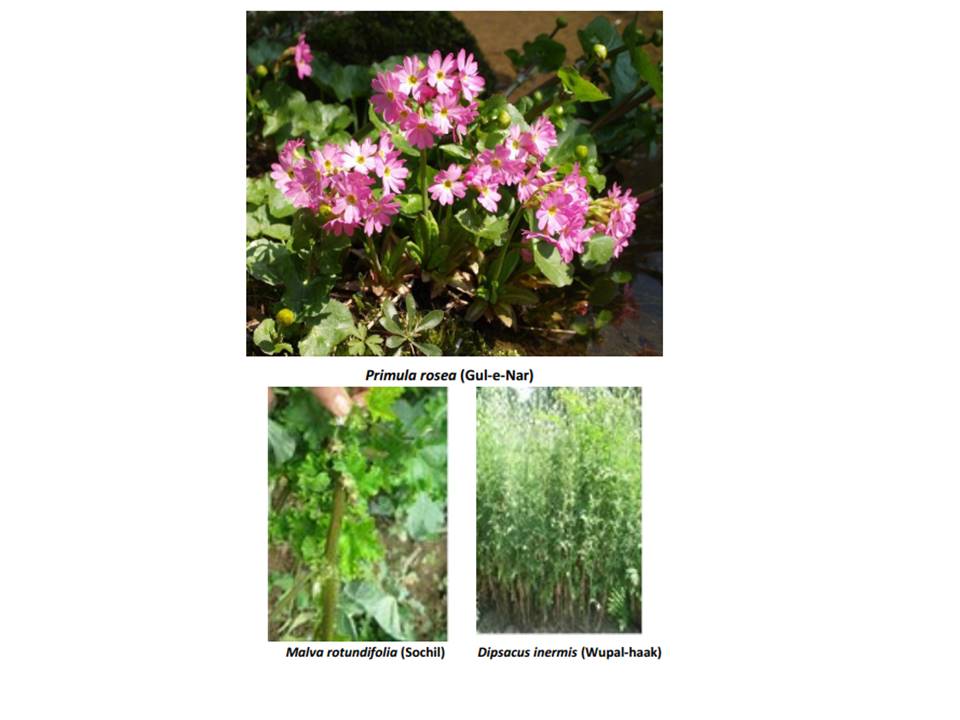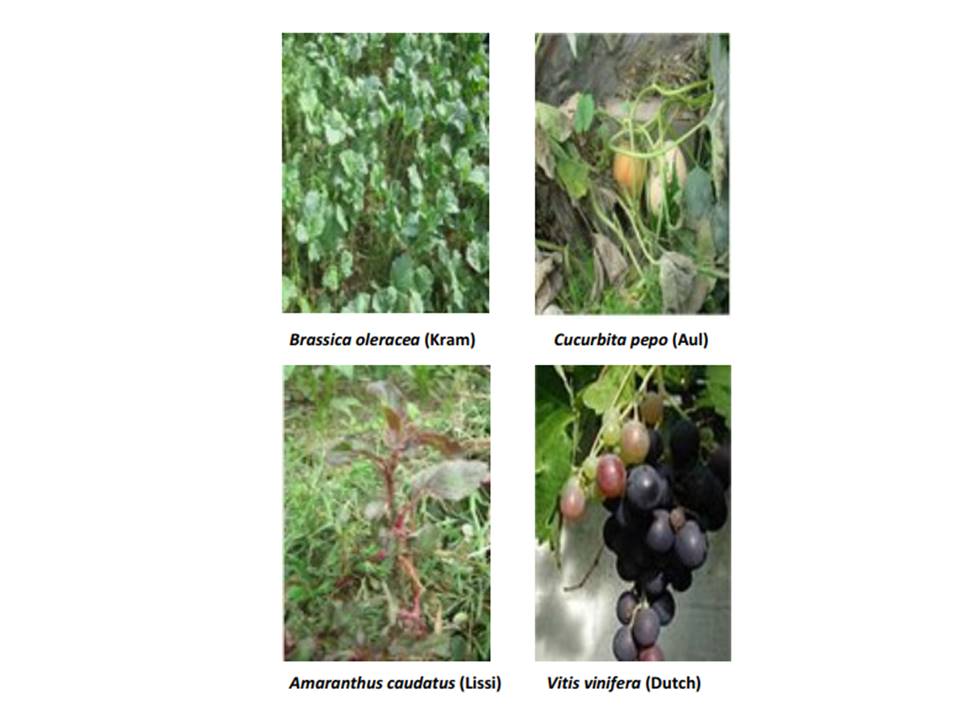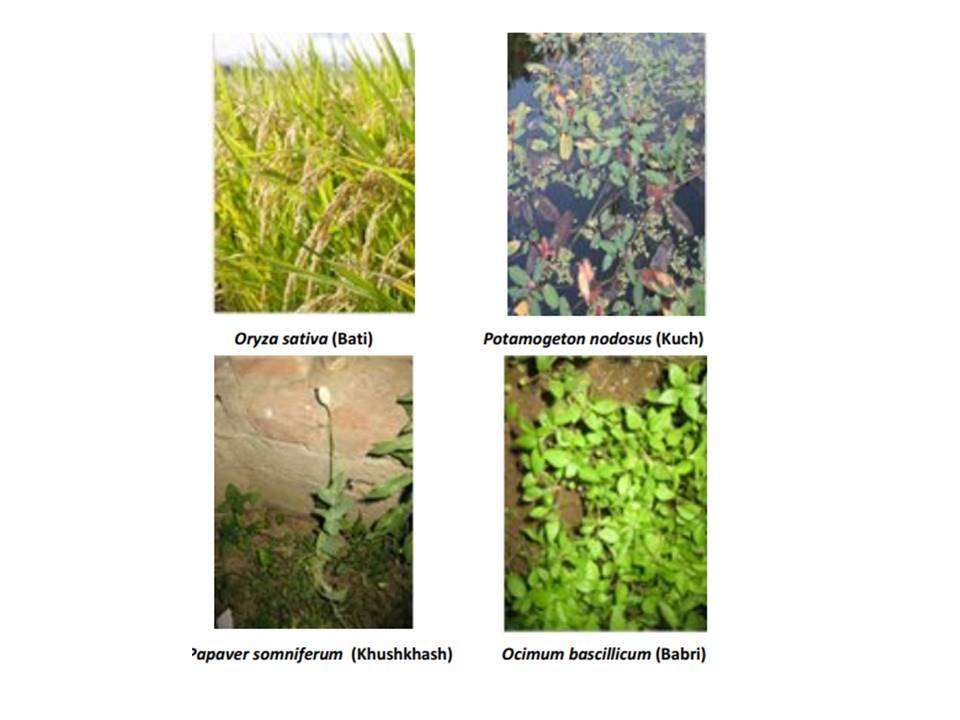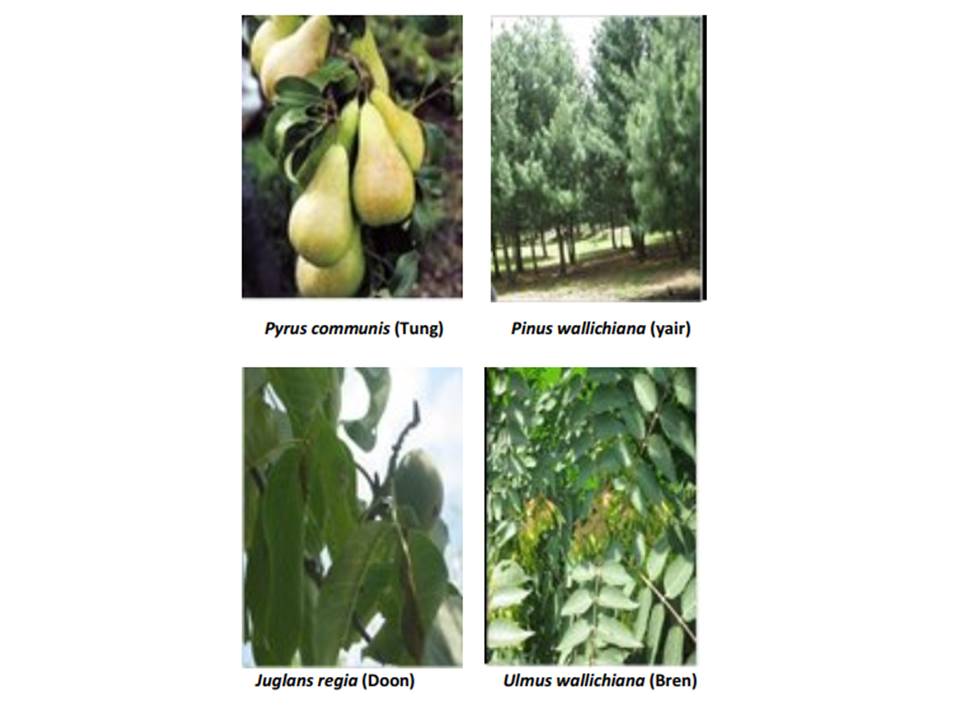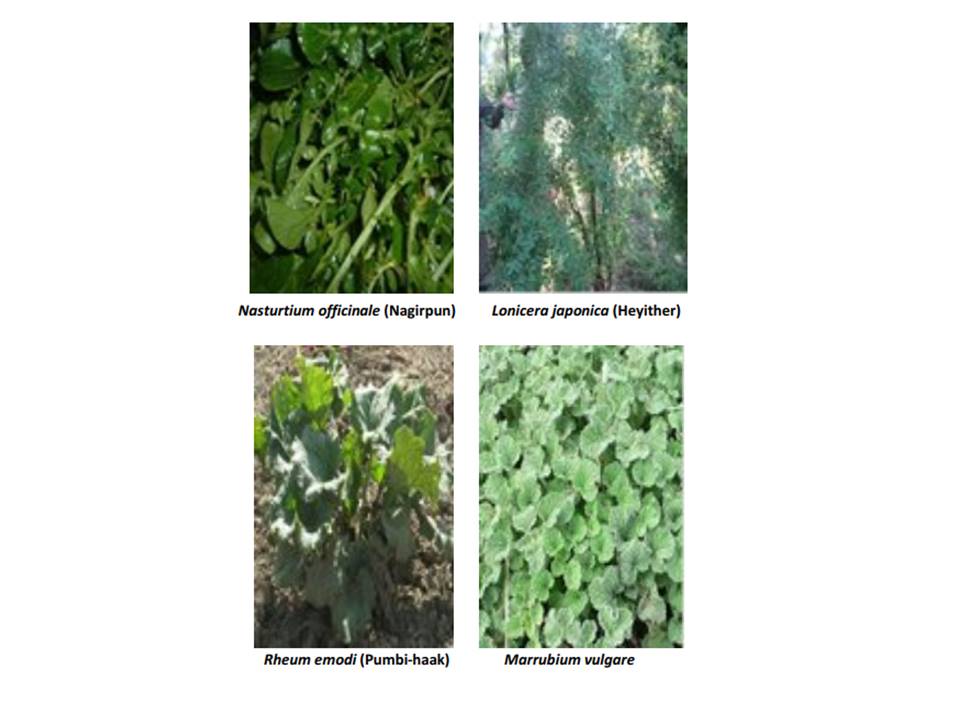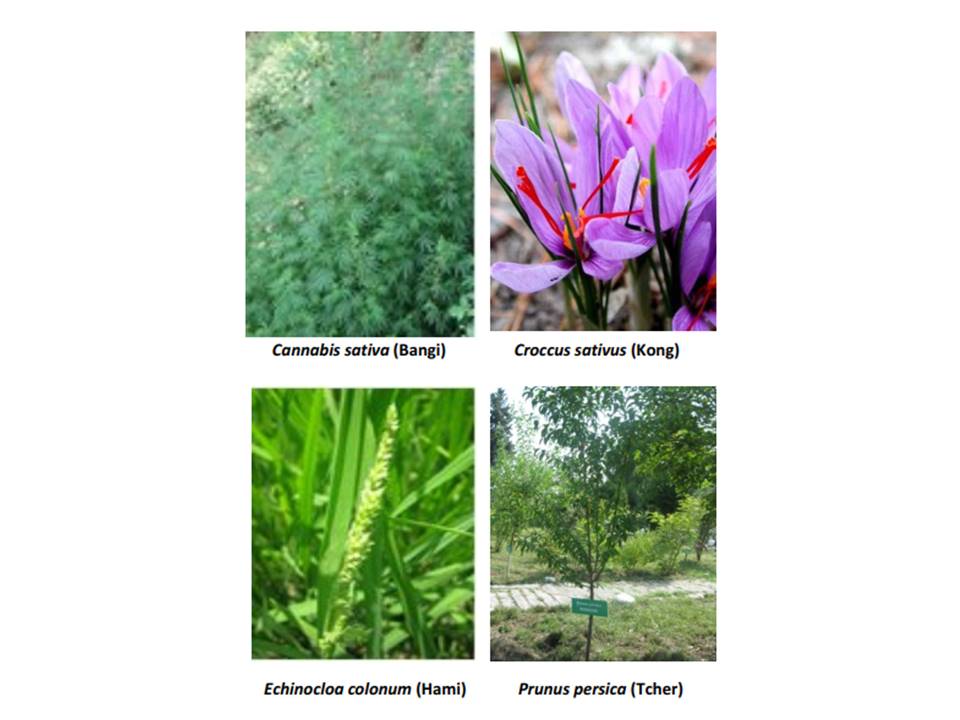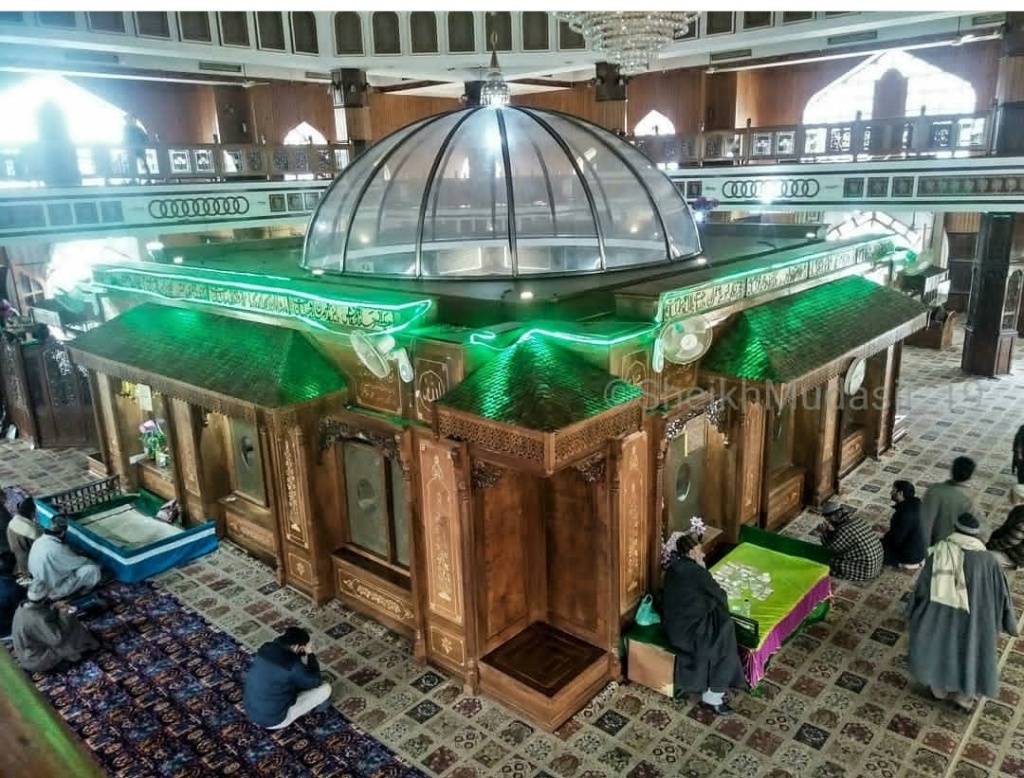
The Kashmiri sufi poetry is, undoubtedly, the marked identification of our unique cultural style. In the entire realm of our sufi poetry, not only the collective Kashmiri psyche stands reflected but it also mirrors the sorrows, joys, dreams, desires, aspirations and sentiments of the common Kashmiris. This kind of poetry, which has been developing for the last two hundred years, succeeded in establishing its distinctive style and text. The Kashmiri sufi poetry reached to its artistic excellence during the times, when, from a political perspective, the region was experiencing its worst type of coercion and vandalism. The age witnessed a marked distance between the poet and the society. The only domain, where the Kashmiri poets found comfort and solace was in the premises of divine circle. The cardinal principle
underlying this relationship was the firm faith in divinity or invisible force.
From the standpoint of text and technique, the poetry which entails in its bosom the concept of sacred and absolute, through the Islamic doctrines, reflects in true sense the essence of the sufi poetry. People with the limited knowledge often feel handicap in determining the boundaries of this
creative realm. Amid intermingling of various civilizations and religious beliefs, and their impact on Islamic sufi doctrines, often put the reader in trouble in demarcating the line of difference between the general mysticism and the sufism, purely as a muslim philosophy. This is the reason, why scholars on the basis of dry rationality find themselves divided into the two diametrically opposite schools, wherein, one school treats this type of poetry autonomous of any established manifesto and to the other, its inherent nucleus only seems as sheer poetic expression. As a humble student of mysticism, I have also no hesitation in asserting that only that kind of poetry can be called Sufi poetry, which falls fit in the
frame-work of sufi doctrines of Islamic thought. From this point of view, there is every possibility for an argument, which asks, more genuinely whether Shah Gafoor, Shams Faqir, Samad Mir, Ahad Zargar and the other poets of this school, whose poetry abounds in references to Hindu Shastras and allied non-Islamic metaphors, can be treated outside the realm of sufi poetry. The argument further needs explanation whether, other languages, which contain appreciable amount of mystic themes, do also possess a good amount of such mystic metaphors or expressions. Though, this hardly coincides with any core theme, but, there is every possibility that it may help us to militate against the hidden shades of their topic.
In the light of Shaikh-ul Aalam’s poetry, the same argument strikes the understanding of the researcher whether Shaikh-ul Alam’s poetry in the form of Shruks is in consonance with the Islamic principle of unity of God, Tawhid or we find something more beyond this domain.True, the shruks of Shaikh-ul Aalam reflect the nucleus of indigenous philosophy known in vernacular as Reshism or Reshut. On the other hand, almost all scholars and the historians are in total agreement that after Shaikh-ul Aalam,
Reshut emerged as an indigenous branch of sufism in Kashmir. On the basis of this agreed notion, Shaikh-ul Aalam has every claim to be acknowledged as a sufi poet. If it is not so, then we have to rediscover, whether the themes expressed by the Shaikh through the poetic medium are absolutely
different from the sufi themes expressed by other prominent Kashmiri sufi poets. After serious comparative study, I have come to the conclusion that mysticism constitutes the inherent devotional nucleus of Islam and no poetry can claim to be acknowledged as sufi poetry, if it is devoid of the concept of unity of God (Tawhid) and the Prophethood (Risalah). In the light of this assertion, the argument can be putforth that only those themes and experiences can form the subject matter of sufi poetry, which exclusively revolve round the sacred themes and in no way contradict or negate the fundamental Islamic principles. From apparent and complex sacred shades, though sufi poetry appears to be more comprehensive, divergent and symbolic than Shaikh-ul Aalam’s poetry, but, it, in no way militates against the basic themes, expressed by Shaikh-ul Aalam in his poetic compositions. Exercising utter caution, the sum total of the argument in question makes us to believe that as in the
philosophy of Imam Ghazali, the entire corpse of Islamic mysticpoetry stands well reflected and legitimized, so on the philosophical level, Kashmiri sufi poetry receives people’s
recognition, through the poetic medium of Shaikh Nur-ud- Din Reshi. The role which Imam Ghazali played towards the dissemination of Islamic philosophy and its devotional aspects across the globe, through his writings, Shaikh played the same role in Kashmir, by using Kashmiri language as a
medium of expression for his felt experiences. Here I, take the privilege to refer to a very significant point that Shaikh-ul Aalam’s poetic merit and his thematic construct, is, in no way less significant from any universally acknowledged creative personality. The fault rests with we people as we have failed to assess or examine or evaluate his multifaceted creative genius. This is the reason; we could not disseminate the
inherent creative worth of Shaikh-ul Aalam’s personality across the boundaries and borders.
Bereft of wisdom and scholarship, some critics in haste began even to hold that Shaikh-ul Aalam’s philosophy is altogether different from what had already been conveyed by Amir Kabir Mir Syed Ali Hamadani, and subsequently by his followers during their sojourn in Kashmir. This is the reason, why our sufi poets, disregard of their affiliations with various sufi silsilas, have applauded the piety, devotion,
patience of Shaikh-ul Aalam along with other sufi saints. Not only this, they have even recognised the Shaikh as a model at an intellectual level, given the wide matrix of his thematic variables. One of our celebrated sufi poets Shams Faqir pays his tribute to the Shaikh as under:
Shaikh Saeb yeli woot manz Tcharas;
Kaeshir Chi piyaran deedaras
Shamas Saeb chu aamut Sawaeliye
Yawun kout gowm baeliye
When Shaikh Sahab selected his final abode at Tsrar
Kashmiris earnestly waited for his glimpse
Shams has come, here with his requests
I have spent my entire span of life in waste
While paying tribute to Lal, poet Shamas does not loose sight of Shaikh-ul Aalam’s glory and greatness.
Wopdesh karni gaye Nundreshanas;
Rindaw dopuhus aeni irfan
Tchepe tchepiras gindun Shah e Hamadanas
Zaan milnaw Bhagwaanas saet
She (Lal Ded) went to deliver her spiritual guidance to Nund
Seekers of love dubbed it a state of spiritual enlightenment
She played hide and seek with the king of Hamadan
The core objective of the seeker is the communion with the God
In the same style, yet another Kashmiri sufi poet Nyama Saeb attempts to elude Shaikh-ul Aalam as Shaikh ul Alam bod Alamdar
Jay tem retnam manz bag Tsrar
Pad waen Nyaman gos Biryan
Walai wyes tsharon mashouk jaan
Shaikh-ul Aalam the great torch bearer
He selected his abode at Tsrar
Nyama, lost in oblivion while giving expression to his thoughts
Oh, friend, let you accompany me to seek the glimpse of my beloved.
It will not be out of context to refer to an old literary form Pad which, has been used by Nyama Saeb to be in circulation even before Shaikh-ul Aalam. In one of my papers “Kaeshiris manz ibtidaye Adbi Sinfae”, published in “Anhaar”, for the year 2013-2014, I had quoted Dr. Mahfooza Jan who while assessing the life and contributions of Nyama Saeb asserts that in his poetry, we particularly find, deep under
currents of love and devotion for Shaikh Nur-ud Din Noorani and Hazrat Sultan-ul Arifeen. This is evident from couple of Manqib written in their memory. In addition to this, the deep sense of emotional attachment towards these celebrated personalities does get reflected like the bubbling waters of
spring. Quoting Nyama Saeb’s piece of poetry, Dr. Mehfooza, further elucidates her assertion as under:
Shaikh-ul Aalam’s name always remains on the lips of every Kashmiri, in such a manner, as if to
act as an invisible support in people’s perception. His name possesses a magnetic attraction for every
Kashmiri and in the real sense has emerged as the hero of masses on the canvas of their memory.
Yus gatsi Bumzoo, Tsrar, Muqam
Tas peth Dozukhun naar haraam
Jantas ninamoo gare garay
Hoore me nuenam churi dil
Whosoever visits Bomzoo, Tsrar and Muqam
The fire of hell will not damage him
He will ever always enjoy the pleasant moments in heavens
My lover has bewitched my heart and enslaved my soul
Another famous Kashmiri poet, Sotch Kral, pens down his love for Shaikh in the following verse:
Tsrar choan darbar kya shoobewuneye;
Daed tal waetith layay naad
Yendri Sotch Kral chu sadaa karwuniye;
Pantch haethi wuhiri naaw nonueye draw
Your audience at Tsrar is in full bloom
Reaching at your doorstep, I would call for your help
From Yendr Sotch Kral is recalling You
History seldom erases the impression of celebrated personalities from human memory
Posh Phelmo waeri te Baghas
Lagi bulbul aerif zaagas
Yendri gazala wun Sotch Kralan
woath lalo pyaro Rupwan
The flowers have grown in full bloom in the gardens around
In a bulbul’s guise, I would wait for his arrival
At Yendr Sotch Kral is reciting a Ghazal
Follow me my fellow being, let us wait at Rupawan for Shaikh
The way we come across references of reverence regarding Shaikh-ul Alam in the poems of Kashmiri sufi
poets, suggests their deep respect, love and devotion for the saint poet. The reflection of this impact stands reflected advertently or inadvertently in the entire literary corpse of the 18th and 19th century sufi poets. The metaphoric or the symbolic clime, discovered by Shaikh ul Alam has often been referred to directly or indirectly, or at times constitute as the background for different famous poems of our prominent sufi poets. Most specifically, a couple of Kashmiri sufi poets have gathered inferences from Shaikh’s famous symbolic poem entitled Gongalnama. In the poem, the Shaikh uses agrarian
metaphor to explain various secrets and stages of mystic discourse. Influenced by Shaikh ul Aalam, our sufi poets employ the same metaphors to communicate their feelings.
The following verses are given here under as evidence:
Luki haenzi laagne moh bar chaw;
Yus kari gongul sui kari kraw
Madh was Sotch Krali tsakh dae traw;
Naw dar aab tie aab dar naw
Sotch Kral
Never glorify the deeds of others
One who ploughs, expects harvest in autumn
Shun prejudice, oh, Sotch Kral, get rid of anger and hate
The boat and the sea are complimentary to each other
Sont yeli aaw tie wuth near waani;
lolik daand heth waaye sa zameen
Hum yuth ne naerith gatsi albane;
And roz saatha chui ganeemath
Shams Faqir
With the dawn of spring, peasants are required to soften the agricultural holdings
With the apparatus of love, you start ploughing the field
Beware, lest the peg gets loosened of your plough
Remain aside; don’t let even a moment go waste.
The above stated verses of Shams Faqir are also designed in consonance with the symbolic style of Shaikh-ul Aalam as adopted in Gongalnama
Yem ti Gongul no kor Sonte kaalas;
tem tem doer lun khaam
Hosh kartai latiye
Waza Mahmood
He who fails to sow in the spring
He experiences unripe harvest
My friend be sensible enough to avoid any misfortune.
Kar te Gongul gudhe due aalai;
Dard baelis Bar to maalai
Harde jamah karto Khalastai;
Kael waasil gatsh aslas tie
Ahmed Rah
Before you sow seeds, soften the land
Help to grow the seeds of love
Pile, harvest the fields during autumn
Tomorrow, have a communion with the Lord.
Aziz Behrari also articulates his experience by following Shaikh’s metaphoric style:
Hosh kar ziraatas dohas te raatas,
Yuth ne maari muqdam tie
Panine ghare nai laagenai naeri,
Chand kus de tawaan
Tehsil pethe yeli haesil mangnai,
maamlas lagi lam lamtai
Pate bronthe dikh nazar,
deshak sath guzar daftar anzraan
Be vigilant day and night on the farm,
lest the muqdam tortures you
If you fail to produce from your field,
who will pay your debt back?
When the revenue officials demand,
from you the state’s share
The suit thus follows will leave you pamper;
the disposal of the case will consume your entire life span.
Seldom, any reasonable researcher shall dare to dispute that the verses cited above does in no way reflect the essence of Shaikh’s following verses:
Dume dum beem bar Shakdaaras tie;
duh duh laagnai wutchnai draw
Yas patch barsaa chakdaaras tie;
yus kari gongul sui kari craw
Sarkaer ajlek piyade yinastie;
purkaar wuthes maeli kormut haaw
Harkar gatchit soorui wanenas tie;
yus kari gongul sui kari kraw
Be always afraid of Thy watcher;
He continues to watch your produce and the field.
Have full faith in your landlord;
Who sows seeds in spring, shall reap the harvest
When the officials from the heavens will come to you with the warrant of death;
Every bit you have done shall be reported to him,
You will be interrogated for your doings;
Whosoever sows, shall reap the harvest
Be it Aziz Behrari’s poem “Kanz Ruh” or Sotch Kral’s “Amri- Khuda Maen To”, all these poems seem to be the Xerox copies of Shaikh ul Alam’s Gongal Nama. There is so close a commonality of idea and expression, between the two that a reader stands puzzled to judge the difference between the two
in terms of thematic and stylistic unanimity. It would not be proper to term this unanimity as an exercise of plagiarism but the examples of this kind of repetition is often seen in Kashmiri Sufi Poetry from its very inception.
Habib-ullah Nowshehri’s very few poems have been traced till now and we find this type of commonality even in his few poems as well. For instance:
Wuth wani gatchaw Baghdaad paanas
Waanas gatchwuw phaalaw deth
Lets us move to Baghdad, o, grocer
Let, you and I keep the shop locked
The refrain of the verse, seems to be the true echo of Shaikh ul Alam’s understated couplet:
Kya karizi marnas, marne ken wakaanan
Gow Kaman jaanan changer karith
Poen zan tchemith gow nawen baanan
Gaye waen waanan phaalaw dith
You cannot escape death, nor can you veil its incoming
It has reduced to dust countless beautiful youth
It dried up like water in newly baked earthen pots
Shopkeepers have since closed their shops.
In spoken Kashmiri, a couple of Shaikh’s metaphoric expressions have assumed proverbial significance and those are being referred to, commonly in day to day spoken language. It is not confined within the ambit of only spoken language but our Sufi poetry abounds on such references too.
One of the verses of Shaikh ul Alam runs as under:
Traem, toor, pick daen akki tokki
Traemi batte, tooris suen te pick daen thuke
Big copper plate, deep copper bowl & spitting pot belong to the same metal.
But food is being served in big copper plate, vegetables in deep copper bowl and spitting pot is meant for spitting
Samad Mir, yet another Sufi poet has used the same phraseology in one of his couplets as under:
Toor, tasht, pick daen thur aek kraalan;
ande roz phande phande zaalan ma
Khor tshun zaehidan zuhdeken jaalan;
kour katchi raaz haenz sapdya zahn
Bowl, copper basin and spitting bowl have been crafted by the same potter,
Keep distance, lest, the fire not damage us
The seeker has made inroads in the complex corners of quest
How come an ordinary bird would become a goose
Karam Buland belongs to the early batch of Sufi poets, whose, very few verses have reached to us. He too stands to be influenced by Shaikh ul Aalam’s style and diction.
Grate phaeri tshle tshlye;
Oat naeri mali talai
Grate meyane rainze lo;
Gulan manz waen di maeyo
The grind stone moves with much discomfort
The flour will burst out of its fringes
My grind stone is just like a polished stone
Oh, fellow, you search for your friend in a garden
In an effort to make the study under question precise, we would like to focus only on those important themes, which often find expression in Shaikh-ul Aalam’s poetry. Alongside Shaikh’s verses, we would also quote verses from other Sufi poets which contain glaring impact of Shaikh’s distinctive
style. ‘ Lol’ or love constitutes the major theme of Shaikh ul Alam’s poetry. Here we quote a few verses of the Saint poet; wherein ‘Lol’, forms the prominent theme:
Aashaq sui yus ashq saeth dazai
A true lover is he who burns in love’s fire
Ashq chui kun shur maaji marun
Feeling Divine passion is the agony of a dead child’s mother
Tchalun chui vezmal te tratie
To display patience is no less than experiencing the wrath of lightening and thunder
Momin Sahab’s poetic experiment reflects the same essence:
Thate cha ashqani tchanji daruniye;
ratshi ratchi matshi maaz khuniye low
Panuni khoon gatsi tresh kani chuniye;
Sui gatsi tchaangi zaaluniye low
Tem ke gaashe gatsi yaar preznuniye;
Ratshi rathi matshi maaz khuniye low
It’s not easy to stand safe against the onslaught of love
It is just like tasting flesh of one’s own muscles
It is to drink one’s own blood, instead of water
You ought to lit the lamps from your own blood
The illumination then caused be used to search your lover
It is just like tasting the flesh of your own muscles.
The argument can further be advanced in a way that these verses referred above contain the impact of Lala’s verse as well:
Dama dam korumas daman haaly;
Prezlum deep te naneyam zaat
Andrum prakash nebar tshutum;
Gate rotum te kaermas thap
Repeatedly, I kept the breath locked inside
With the illumination of truth, I realized the self
Then, I delivered out, the light I experienced
I held him tight in the realm of darkness
Leaving aside the creative quality, but from quantity point of view, the order be given as under: Shaikh ul Alam; Lal Ded; Momin Sahab.
The phrase or metaphor ‘Nothingness’ has been so often used by Kashmiri Sufi poets in tune with Lal and Shaikh’s creative style; with brevity, I, would like to quote a few verses of Sotch Kral:
Kehnai ous, kehtam ous;
kehnas maaniha chu kya
Kehnai mani wanun kous;
paanai ous bai bahanai
Out of nothingness, culminates the essence of being
Nothingness, undoubtedly, breeds some meaning
Nothingness is par beyond the borders of ambiguity
He is the lord; I owe my existence to Him.
In the same manner, human ego constitutes the major theme of Shaikh-ul Aalam’s poetry and the verses which revolve round such themes have been found the best specimen of his creative genius:
Nafs chui made hous te haankal tchate
Your ego is just like a mad elephant, about to unchain itself
Nafsan karenam zadal tshai
My ego has reduced me to the thatch with holes inside
Nafsi mourus wai
Atchit roodum gate
Athe hai yeham hai
Kartal tshnehas hatai
Oh! my ego consumed me to the point of annihilation
It had captured me unnoticingly
If I succeed in catching hold of him
I would cut his throat with my cleaver
Nafsi miyane tcheeriv agow
Ditchmai daggo pholham ne zahn
Oh, myself, the gnarl of apricot tree
You never crack even after a strong trouncing (of axe and hammer)
For the sake of face value, we, here quote poetic verses of other Sufi poets, which apparently contain a same thematic commonality:
Nafsas saet chui khaas nafsae;
Ruhas te jismas milwan chai
Ashqas husnas kunaye kaan chui;
Raaz haenz manz chui jaami jamas
Shamas Faqir
Associated with you is eternal self as well
There is close association between soul and the body
The seeker and the beloved suffer the same magnitude of pain
The glimpse of Swan king is visible in the mirror of Universe (Jami Jam)
Ruhas te nafsas duen chui jung;
Ruh chus dapan kehn moh mang
Nafsaeniyat chai fakhta rang;
ranga rang pane chu berang
Rahim Saeb
There is a constant conflict between soul and ego
The soul forbids it from a demanding
The ego, is full of colourful attraction
Amid colourful surrounding, Lord appears colourless
The verses given above of some Sufi poets may arouse certain queries among serious readers and scholars and to satiate their quest, the following verse of Shaikh-ul Aalam is given here under for argument:
Nafsas moh van baddai;
Nafsas saet soda chui
Nafs panun ratun hadaye;
Nafs preznith Khuda chui
Don’t curse the ego all times
You have entered into a bargaining with it
Always keep yourself under control
Understanding self is sure to lead you in communion with the God
Nafs chui mashouk ratith thawun
Buthi tati chui warzun wawae
Your self is your beloved, catch hold of him
Forth coming are devastating winds
Rehman Dar and Wahab Khar are counted among the two prominent Kashmiri Sufi poets. We have not till now, quoted any of their verses to substantiate our argument. The most creative specimen of Rehman Dar’s Sufi poetry stands reflected in ‘Muqam Hairat’. As a Sufi, only one predominant shade of poet’s cemented belief in divine, makes it fit to suit the given frame of reference.
Naseeb daran naad dith niwaan;
Benaseeb tati haeraan
Aqal aayem taemi shai pherith;
zaye kathe lajem gatchnay
Taamath boozum su Rabul aalameen;
Khael chune kaensi trawaan
The most fortunate are bless showered upon
The unfortunate find themselves astray
Wisdom failed there at all and
I lost my power of decision
Then I was told that he is the Supreme creator
Who never leaves anyone unfed (from his grace)
Though we come across multiple of verses from Shaikh-ul Aalam’s poetry on the subject cited above, yet, for the sake of clarity, we quote here these verses:
Dayen yu lekhue laanani ghare;
Te kuni choani tcher moh
Dekki haye gehakh kaeni khangrai;
Dekuk kuni choani tcherimo
What destiny has stored for you
There will be not even an iota of addition or loss to it
What if you rub your forehead with a sharp edged stone?
What is destined to you, it will reach to you unhindered
Kehntchan duetukh auri aalaw;
Kehnchaw rachai naalai veth
Kehntchan mas cheth aech laji taalaw;
Kehntchan papiyh gaye haalaw khet
Some are blessed inborn
While some attempted to drunk dry the entire veth
Some drank madly and fell into a trance
While some lost to locusts their ripe corn
Here, Samad Mir’s following verse suits fit to the theme under debate:
Yus yeti awlaye phouli;
Tas aasi gur, gound te naaw
Tati cha diwaan anni khali;
Kehu kalli kar theraaw
One who is born with riches
He will be enjoying power, status and fame
There the fortunes are not distributed randomly
Oh my impatient self, have a bit patience.
Rehman Dar versifies the mortality of the world and God’s mercy as under:
Mei tchanjum souri samsaar;
Wutchum ne kanh wafaadaar
Walaikin akh Khuda yaar;
Wutchum ne kanh wafaadaar
I searched for Lord in every corner of the planet
I found none trustworthy
Except God, I found none my well wisher
I found none trustworthy except God
And Shaikh-ul Aalam had already articulated the same idea earlier as under:
Sui aus tie sui aasi
Sui sui karizeha zuwo
Sui saeri andeshe kaasi
Haa zuwo paayas peti
He (God) is ever live, He (Lord) is time abounding and eternal
One should yearn for him only
He is powerful enough to erase your doubts
Oh, self, awake from deep slumber
After reading the quoted verses of Rehman Dar, one feels that while sticking to his own distinct style, he emerges as the true inheritor of the creative realm, the edifice of which had already been laid by Shaikh-ul Aalam .
Sare kenh sapdumne sar gasht lagimo
Baw saere be wan kas
Even betting everything, I could not found passage that would lead me to him
Whom I will enquire from, his address in this ocean of silence
Lalech kader laal shenah zaane
Haal baewze ne malbaabas
The value of a pearl knows a jeweller only
Never reveal your heart to a world centric clerk
See how Shaikh-ul Aalam, articulates the likewise felt experience
Lalech kader dungal zaanaye
Poush kaw zaanaye soeth peth wath
Shamhech kader pompur zaanaye
Match kya zaanaye pomper gath
The value of a pearl only a professional diver knows
How would an animal know the way to the river bank
The worth of the candle only the moth knows
How a fly would know the pleasure of moth’s revolving round the
candle
Wahab Khar has also used in Shaikh-ul Aalam’s style and kind, the same metaphors and symbols. Here are some examples:
Pomper sund gath mech kaw zaanaye;
Az roz sanay ha madno
Anis sheesh howe kya wutche roye;
Zaris guftaaruk kya aarizoye
Kash teer layun unn kya zaanaye;
Az roz sanay ha madno
It is beyond fly’s comprehension to understand the meaning ofmoth’s moving round the candle
Oh, my beloved, have a rendezvous with me tonight
It is foolish to show mirror to a blind
The deaf never yearns for any one’s speech
The blind is unaware of the speed of an arrow
Oh, my beloved; have a rendezvous with me tonight.
Akh tuler biyakh chaye matchi;
Zaat panin chane tshaye roozan
Tuler aasaan match reach raechi;
Zoone patchi saeli dal jaan
The fly and bee have nothing in common
It is too difficult to conceal one’s origin
The bee is seen always loaded with honey
It is pleasing to have a round of Dal during full moonlight
Samad Mir uses the same phraseology:
Maech kya maani bozi pomper daalan;
And roz phandi phandi zaalan maa
It is useless for a fly to attach meaning to moth’s dance around the candle
Be distant away from fire, lest it consumes us by fraud
Possessing the same tone and tenor, the following verses of
Shaikh-ul Aalam said long eras before reveal the same essence
Raen kya kari Satte gaz pootchai;
Keha kari nasty ratche rong
Gaen kya kari tesbhi ratche;
Kya karaye toh matchaye prang
The head cover carries no meaning for wicked women
The nose ring is useless for noseless woman
For a prostitute, the tasbih is meaningless
For an ordinary wandering women balcony carries no weight
‘Shesh Rang’ is a monumental poem of Rehman Dar. Some people believe that the poems, under this title constitute separate poetic form but the truth is that other poets have also produced poems under the title of Shesh Rang. Among these poets, Wahab Khar is prominent. The following stanza of
Wahab Khar’s ‘Shesh Rang’, falls very close to the tone of Shaikh-ul Aalam.
Khabri raste paano qabri meyani cheno
Daer n ate barri ha
Nakir o munkir hisaabas yenamo
Kya chai khabri ha
Oh ignorant Self, my grave is devoid
Of any window and door
The informers will interrogate me about all my actions
Oh, Listener—you can’t conceive the pain of the moment
On hearing these verses, the reader’s mind is sure to have caught sight of Shaikh-ul Aalam’s following Shruks as well.
Nakir te munkar jawaabas wasan;
Parbat tchasan hoshaw saeti
Shoobe wanis paanas pather thaasan;
Baetch te pothar mo watchun saete
Kunsi zanis teti aawusan;
Lasan paaye tati maris katti
Bukri peth yeli kafan kaasan;
Sarf te gunsae wutchan saete
The two informers will ask queries
The mountains shall fall by wailing
The bubbling youth will be dashed to ground
Neither your spouse nor your offshoots will
Come to your help
Alone I will be interrogated
How come the body would with stand there
No sooner the coffin will be unshrouded from the face
The snakes and vipers will fall on their prey
In the following stanza of Rehman Dar, without any substitute, we come across the direct impact of Shaikh’s metaphoric expression.
Dodh iblees takh logum dooras;
Mehentas soor sapnui
Tan chum waswaas gomut paeda;
Shivas bae ausus yaar.
With the denial from Iblees, there ended a period of my life
The hard labour was reduced to dust
From the very moment, a doubt overpowered me
I was once a faithful devotee of Shiv
The said stanza diverts our attention to yet another shade, to which we already referred at the very outset of the paper. That shade is an abundant reference of Brahmanic Shastras in Kashmiri Sufi Poetry. Such style of expression, we find very oftenly in Shah Gafoor, Samad Mir, Ahad Zargar, Wahab
Khar, Shams Faqir etc. For example Shah Gafoor’s this verse:
Basher traewith easher gaarun;
Easheras saet roz sapdak sew
Easher sapdun gow sharer maarun;
Daar naye daarun su ham su
Don’t invoke for any other aid except God
If you seek Lord’s favour, you will be counted among the blessed
The annihilation of self means communion with the Lord
With deep faith and devotion, the seeker comes near to God.
The initiation of this poetic tradition though begins with Shaikh-ul Aalam, yet it was continued by latter day Sufi poets. Having close association with Shaikh’s saintly personality, the kind of poetry as such, bought a greater degree of legitimacy. Had Shaikh not laid the foundation of this kind of poetry, there was every possibility that the latter day Sufi poets could have met the public wrath.
Now the question that arises is; what justification, this sort of poetry had before Shaikh-ul Aalam. To my knowledge, Shaikh-ul Aalam’s this style and unique mode of expression seldom militates against the fundamental Islamic doctrines and the cultural setting approved by Islam. Instead, it provides a credible background for its propagation and promotion. Here with brevity and modesty, I refer a few episodes from Shaikh-ul Aalam’s religious career.
To make Islamic message more popular and tangible among the illiterate masses, Shaikh-ul Aalam’s interaction with the Brahman priests is of marked significance, particularly Shaikh’s dialogue with Bum Saed and Tuli Pandit proved very fruitful towards the process of Islamic acculturation. The
dialogue between Bum Saed and Shaikh-ul Aalam is worth mentioning, wherein Shaikh ul Alam, by using Brahmanic idioms convinces Bum Saed to enter the ambit of Islam. Before entering into the fold of Islam, Bum Saed seeks clarification from Shaikh on certain culture related issues. For example
Kusu push te kusu pashani;
Kamu kosam lagas puzai
Kaw karith Terath zal chaewizas;
Kaw Easher nendri Wuze
What kind of animals I, shall offer to the Lord
What kind of flowers shall I adore his Idol With?
To whom shall I spray the sacred water of Tirths
When Lord shall awake from sleep
From the above dialogue, it is evident that Bum Saed seeks to follow the traditional way to offer prayers. Shaikh responds Bum Saed’s queries in a language which appears more tangible to the Brahman Saint.
Patchi push te patchi pushaeni
Bawik kosam lagus poozai
Shesh gagane tarith Zal chaewizas
Tchupe Easher nendri wuzay
The deep faith and devotion out merit all sacrificial animals
The recurring chanting of his name is an un-matching prayer
The visions of heavens is enough to purify the soul
The silence is the best tool to awaken the Lord
Bum Saed, being familiar with the tone and tenor of this kind of spoken language, which Shaikh-ul Aalam used while conversing with him, easily understood the underlying objective of the saint. The conversation between the two, reflects the intellectual dimension of the subject involved. Coming down to the level of unlettered people, Shaikh-ul Aalam uses different modes of Speech—Arabic, Persian linguistic expressions against the Islamic and regional cultural setting. This distinctive mode of expression, on the one side, makes people aware of the fundamental concepts of Islam and on the other hand, the regional linguistic background, enables him to make people feel attached with the soil.
Naman bale gulah karetaw
Haji Kaba guzaertaw jue
Fambe kaayas silah paertaw
Laegith neertaw Arjun Dev
From the place of your prostration fly so high
Perform Haj and allied rituals
Adorn your tender body in arms
March ahead as Arjuna of Mahabharata
On the one hand the saint poet emphasizes upon the importance of offering regular prayers and performing necessary Islamic element of Haj, but on the other hand, he uses metaphors, which have nothing to do with the Muslim culture. But, indeed, the given metaphors are familiar with the people, whom, Shaikh-ul Aalam is addressing to. Well the saint could have easily used the name of the Muslim
Warriors like Hazrat Ali, Hazrat Umar or Hazrat Imam Hussain(RA) in place of Arjuna. But, the prime motive of Shaikh appears to make the new converts feel comfortable within their own traditional cultural border. The same principle applies; when Shaikh-ul Aalam, instead of using the expression like Zikr, generally uses the phrase “Su Hum Su” a phrase opted from Hindu Shastra, lest the new converts get a
feeling of cultural aggression or linguistic onslaught. This sort of linguistic shift or adjustment or conjunction became in the coming days, the representative medium of Kashmiri Composite Culture.
Without extending the discussion further, let us focus on those shades, which constitute the major themes of Shaikh-ul Aalam’s poetic expression. One of the major themes of Saint Poet is ‘Death’. The fear of Death and regarding its inevitability; there are scores of verses, we find in Shaikh-ul Aalam’s poetic anthology.
For example:
Mout chui seh tie kotu tchel zay
Khel manz kaddi tchrith kath
Moutich sherbet chen ros ne belzay
Suli kon gayukh tchenith kath
The grip of Death is the Lion’s trap
It can take your hold among countless
There is no escape, from drinking the cup of Death
Why couldn’t you realize it earlier
Sotch Kral articulates the same feeling in the following verse:
Khatith bae rozous maleqel moutas;
Tchatith taalaw aam
Haa ratith nuenas khatith be draw so;
Tchena yaad rudui kehn
I attempted to conceal myself from the catch of Death
Yet it caught hold of me, breaking out the ceiling of house
After, he took me along, I felt ashamed of my doings
Oh, myself—Amid worldly attractions you forgot everything
Regarding the mortality of the life, see how Shaikh personifies the destruction caused of Death through effective illustrations and imagery.
Khaanan haenden yiman robkhaanan
Jaanan dapaan apaer gatch
Sondri wutchmakh har wakh naawaan
Chimrew saethen duwaan latch
Teth jaaye wutchum az kapas bawaan
Nasri, me wutch te tchi wutchi ne gatch
Those majestic mansions of the nobility,
Where the passage of elite, was only granted
Pretty dams engaged to amuse them without fail
With their long robes, cleansed the dust
The very site, is now used for cotton plantation
I saw, Nasr Baba, now you go and witness the same
Following the footsteps of Shaikh-ul Aalam; Nyama Sahab versifies the same idea as under:
Range mandoren, rob khanan mout karan wujaeriye
Marg chu tithay warge walaan
Maenz kadaan baazaeriye
Garay drayos chande chunne
Banne keh baazaeriye
Pate brunthui nazar diwaan
Rayemai dardil saeriye
The death destroys illuminated mansions and majestic structures
The death divorces you from riches and fame
Penniless, I left home to tread in the lanes of destiny
I found none around me; even my bosom friends had given me
unceremonious farewell
Youth and ageing is yet another cherished theme of Shaikh-ulAalam. It is evident that in the light of these diverse stages of life, the reaction of human behaviour towards these realities stands reflected in almost all the creative languages of the world. Whether, it is the result of my scholarly handicap or
the truth stands as it is, the dynamics of Shaikh-ul Aalam’s expression in dealing with such sensitive and heart piercingthemes, has until now remained un-matching.
Though some Sufi poets have borrowed the very metaphors,used by Shaikh-ul Aalam, to verify their poetic experiences but they have not reached to that level of creative excellence, which had been reached by the saint poet Shaikh-ul Aalam:
See for example, Shams Faqir’s these verses:
Aaw soraan mei lakchaarow;
Hange zuzran wolnam naal
Waqt sooryum waen kut laaroo
Marai yaaro rozi armaan
The youth has started fading
Sickness has overpowered me
The age has turned me gray, how painful it is
My friend, you would wail over my death
If we set to find examples from Kashmiri Sufi Poetry, we would come across scores of verses, which contain the direct influence of Shaikh-ul Aalam’s phraseology and metaphoric expression. Without giving further extension to the topic, let us limit our discussion by advancing only a few examples
from Kashmiri Sufi Poets, which provides credence to our argument:
Aem kuneran kyah duet jalaaw;
Tas kuensae kya chu naaw
Prezi manz razi paan khajeum;
Mot mashouk yaad peyum
The essence of his oneness abounds all
By which name, the one is known to
From Oblivion, I attempted to catch hold of a connector
I cried earnestly for my beloved for help
Kaenz paewes yud tarakh fandai;
Zahn te now tchales gandigeye
Wandaye raavi haantchi karni saeti;
Tchandnas baneya Divdar
Even if you add candy to some rotten liquid
The dirt will ever remain there
Nothing beyond frustration you would achieve
The sandal will never turn a Divdaar
Fiqri henzi razi gatsi lamuniye;
Zikri saet labhan Shah
Kunzi te kulphas war gatsi duniye;
Harmokh sui non hai draw.
One must always chant his name
By regular remembrance, one can find the Lord
By twisting the key into lock
In all the directions, the Lord stands reflected
Dohas te raatas tchen chune saatas;
Nooras te hoori wanwaan
The planet holds no rest, And the revolution goes uninterrupted
The fairies always sing the appreciation of Lord
Nasiyat karizeni nasli shaitaanas;
Tale kaen zaenzen aasi maa khaam
Maurifat kya kare napaak baanas;
Tas nadaanas kar tchale tshai
It is useless to talk wisdom to dunce
The rustic appeals none
The love doesn’t clean the dirty bowl
I wish the veil not to blur universe
Shams Faqir
Few verses of Wahab Khar are given here for reference:
Saeri che pranaan nabkaaras;
Gash daaras ne haal
Kor mei yawunan anaeri gotte hai;
Kodd ye bazaar mei haawun
Aem athray kornam dutti dutti hay;
Yeam nati hai maaras paan
I painted my youth pomegranate red
I carried it to market for evaluation
The moth reduced me to rags
If my beloved never turns, I would be left with no option but to kill myself
Yawun meyane gul e anaaro;
Che rombul gule te shoobe wun mathai
Yem yali daznai dozakhe ni naaro;
Adh kya kari adh kot gatchai
Shaikh-ul Aalam
My youth is full of life like a pomegranate flower
With embellished muscles and a pair of delicate hands
When these will be burnt in the Hell’s fire
Then what shall I do, Where shall I move
Wande sheen kenenas roodum ne baw;
Naaw gayem nearith bathe tal yam
Rahim tati rachzen yeti atchdaam;
Wesiye zahn tenaye tamana dram
Gone are the days, when I used to sell winters snow for high bucks
The moment my boat’s anchor unfastened from bank
Oh, God; Save Rahim from snakes and reptiles of grave
Oh, my friend, my desires never came to an end
Yet another verse of Rahim Sahab seeks our attention
Mane buz reshaw and roode wanine
Haye laet darmaane yaar antan
The secret of Life, understood, took the Reshis to jungles
Oh, my mate, kindly arrange a meeting with my beloved
Quite akin to this verse, let us conclude this write-up by
referring the following verse of Shaikh-ul Aalam;
Poshe maten yeman abdalan;
Khush qaliman buzikh manye
Gosh ratikh peth sangathan;
Yeman lalan moul kus zanai
The blessed enjoy the mercy of God
If you succeed in understanding the essence of Revealed verses
Your self will enjoy the high position in heaven
Its not simple to be grasped by every sundry.
Article can be found in:-
‘ALAMDAR
A Journal of Kashmiri Society & Culture
Vol. IX 2016 No: 9
